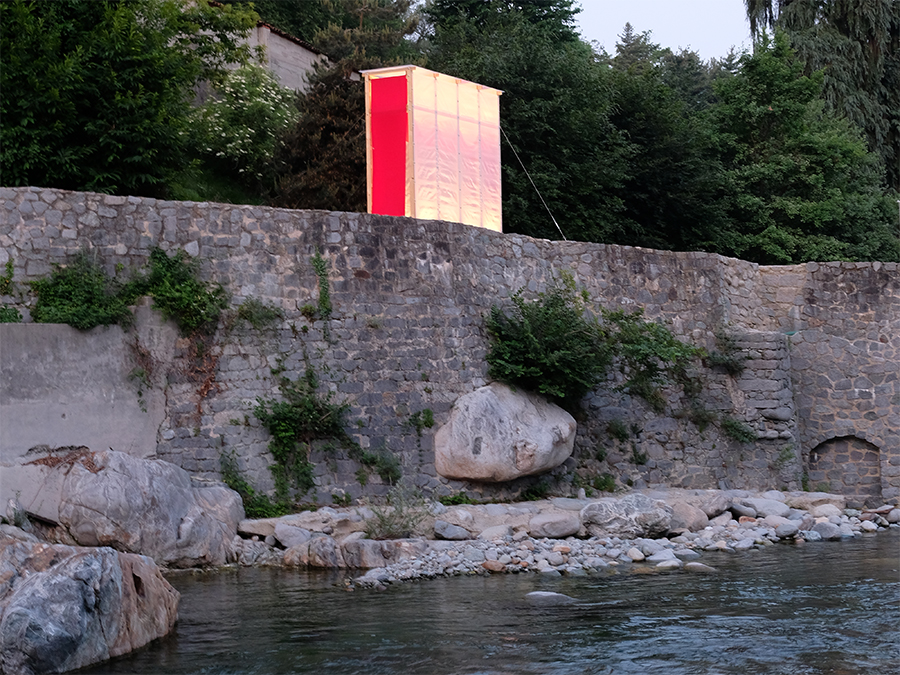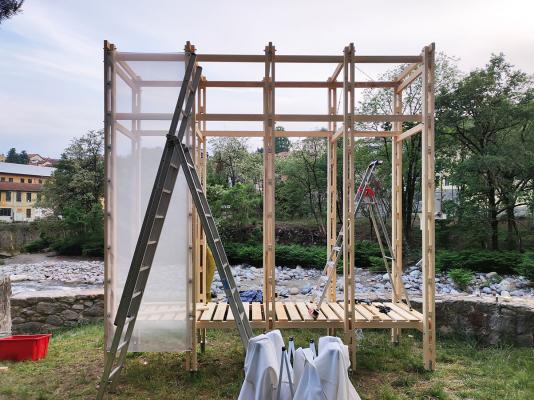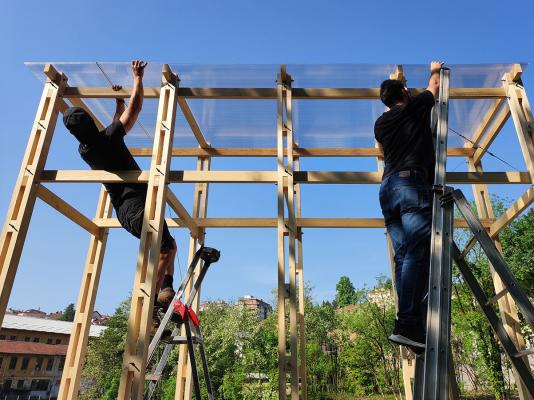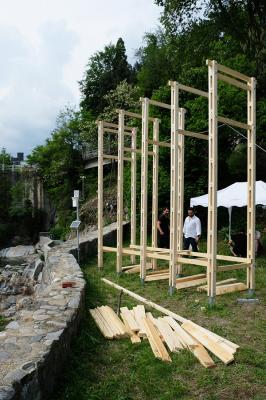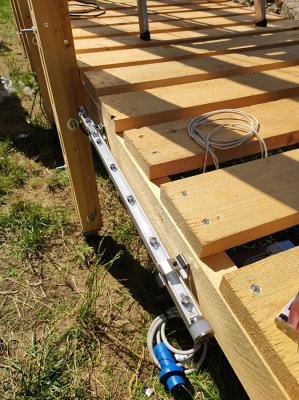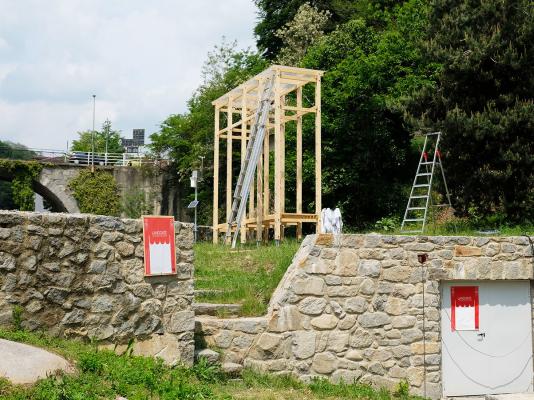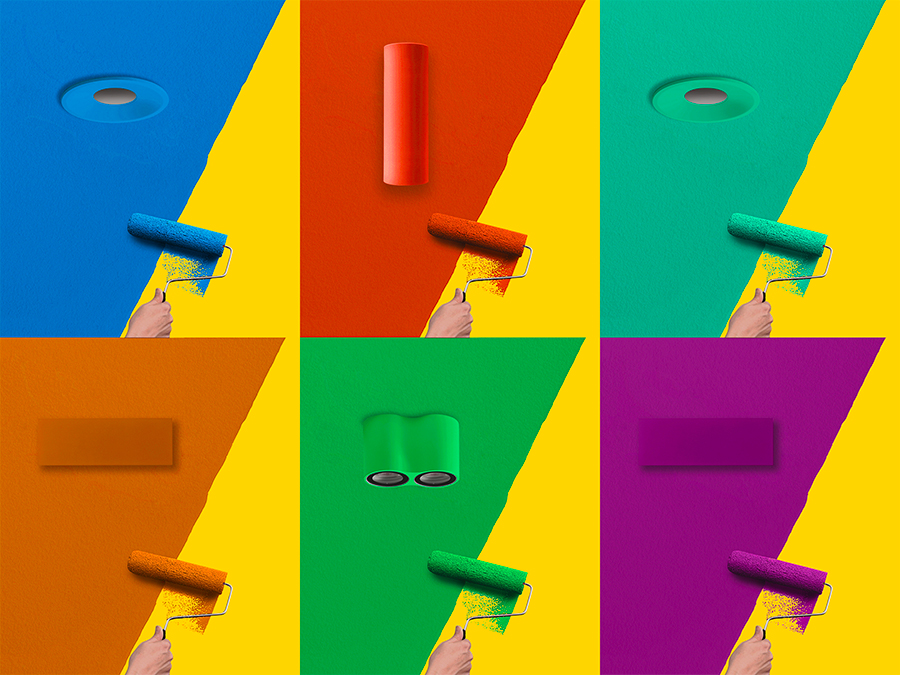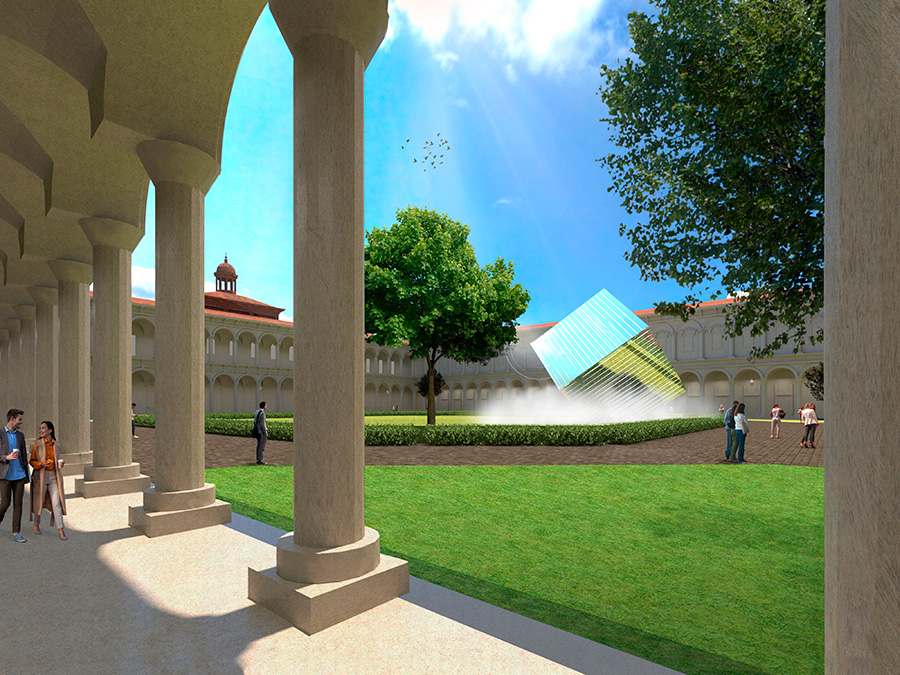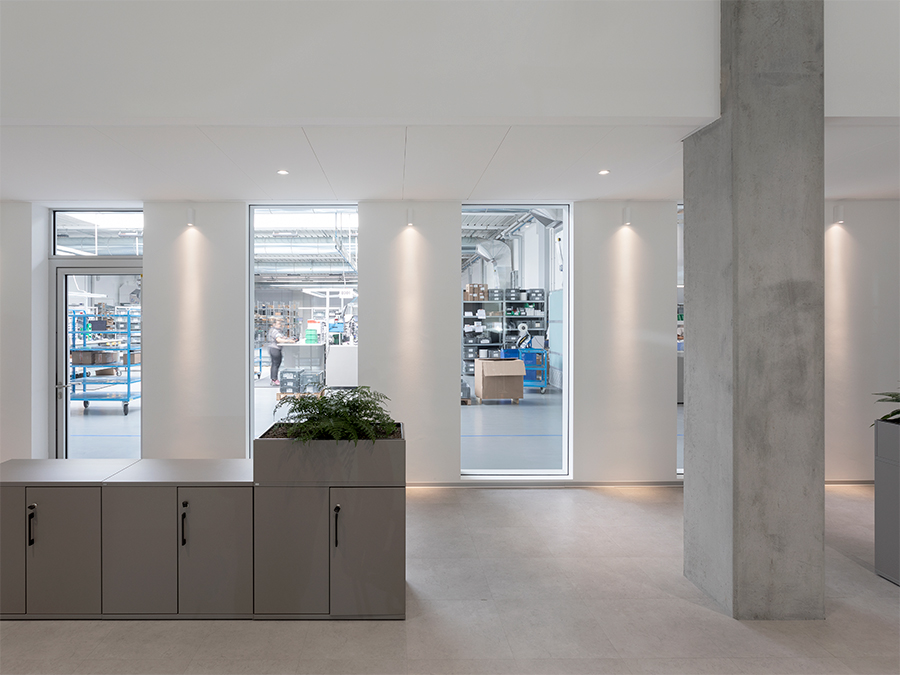The looms of Biella inspire me.
So said Filippo Tommaso Marinetti, father of Futurism, on visiting the Piedmontese city in 1937. His remark has gained new topicality for us. Thanks to the region’s particular attributes, Biella has been hailed as “the land of wool” and “the textile capital” since the Middle Ages. Now, in the last few months, it has been at the centre of intense design activity aimed at enhancing the spaces identified with the region’s industrial culture and its environmental context. Young architects and engineers have been competing for the Federico Maggia Award 2022, entitled Imparare dal territorio. Giovani progettisti fabbricano spazi di conoscenza (Learning from the land. Young designers fashion knowledge spaces).
Of these, just ten groups were chosen as finalists by the Selection Committee. The award, now in its eighth edition and its fourth national one, was launched by Fondazione Sella with the Biella Associations of Architects and Engineers and is dedicated to the memory of Biella architect Federico Maggia (1901–2003).
Fashioning spaces of knowledge: Landgate and the Maurizio Sella woolmill
It only took a few words to capture our attention: youth, regionalism and environmental protection. Here at L&L, we are attuned to many topics, of course, but when a project combines these three elements, our support is total. Thus was born our technical sponsorship of one of the participating teams – made up of Giona Carlotto, Giacomo Premoli, Blendi Vishkurti, Edoardo Zamberlan and Gabriele Catanzano – who worked at the Maurizio Sella Woolmill, in the Giardino delle Fabbriche (the factory garden), in an area where the natural and man-made landscapes merge to form something unique.
It was here, in this little patch of greenery in the Alpine foothills, at the meeting of the river Cervo and the Maddalena road bridge, that their Landgate installation took shape. It makes use of the river landscape’s intrinsic qualities, namely stone and water, to create an invitation to discover a place that had long since passed into oblivion.
Landgate is a device for reading the land, a model for understanding the space it sits in, that seeks to summarise and reinterpret the historical and physical elements that define it. Raised a little above ground level, the construction features a system of canvases and is enriched by Trevi 1.0 profiles fixed to the inside of the wooden frame. The resulting qualities – transparency, lightness and luminosity –- also enable the project to reflect on the water.
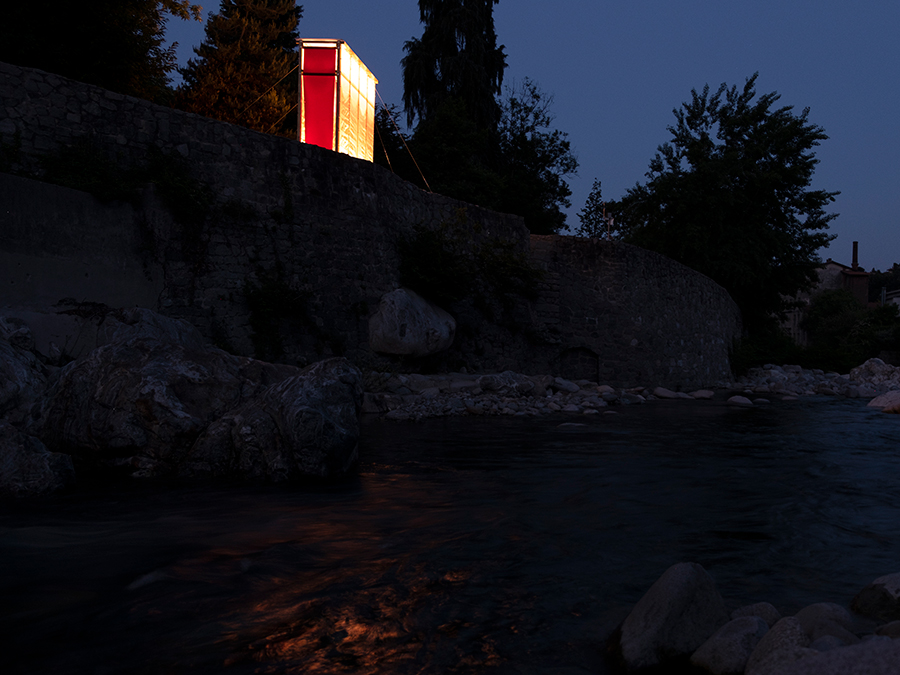
Landgate, the project presented by the Federico Maggia Award 2022 finalist group composed of Giona Carlotto, Giacomo Premoli, Blendi Vishkurti, Edoardo Zamberlan and Gabriele Catanzano
Inside, the senses are amplified: the visitor’s eyes are drawn to the view, a panoramic scene framed by the structure, while their hearing is stimulated by the roar of water from the river below. As if having passed through a portal – a “gate” – for a moment the visitor feels detached from the world and in touch with nature.
And only nature.
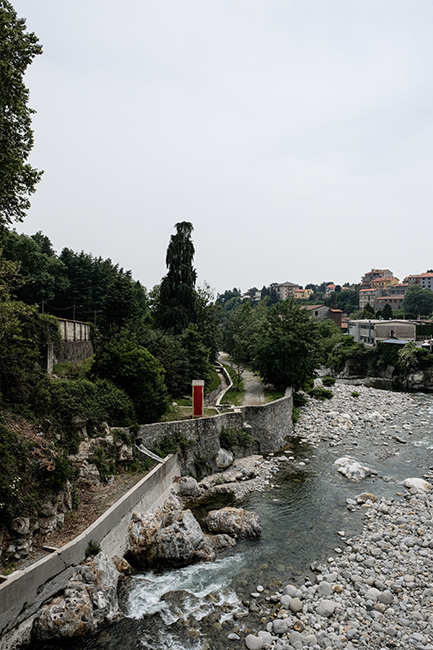
The Biella landscape chosen by the team for enhancement
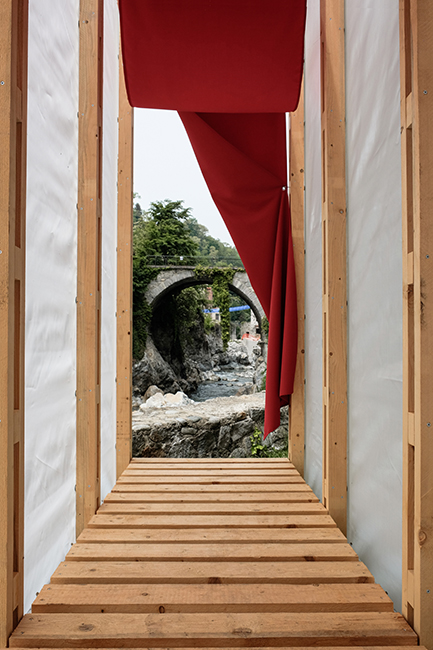
The view from the Landgate “device for reading the land”
Landgate, a device for contemplating the landscape
Landgate is also a device for contemplating the landscape, a tool that helps us to better perceive the sensations generated by the sight of an almost metaphysical place completely immersed in nature. It is a concentration of centuries of history linked to the industrial use of the hydraulic energy produced by mills exploiting the waterfalls in the river Cervo. Everything evokes emotions, from the woolmill buildings to the sequence of ancient passageways and gardens that surround the complex and transport the visitor back in time, to the Middle Ages, on a journey of discovery of this place's past. It was from this observation point, 150 years ago, that Quintino Sella, the Biella-born scientist and politician, created a space for himself for contemplation and self-reflection, near a large boulder surrounded by vegetation.
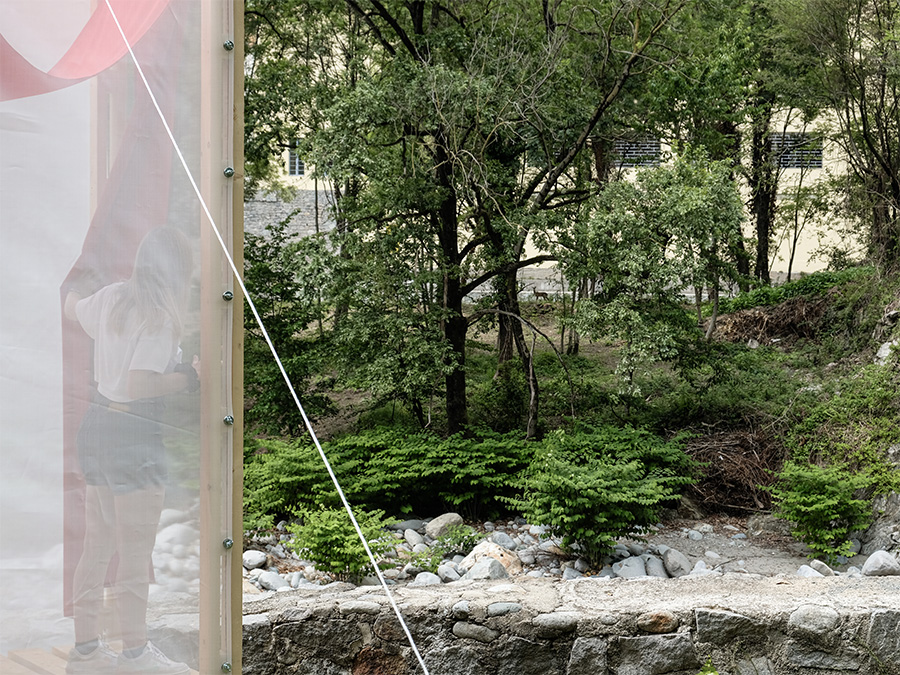
Contemplation of the natural and man-made landscape from the Landgate installation
Vicenza and Biella: two cities made of the same “fabric”
Wool manufacturing in the Biella area has ancient origins, as we know from archaeological finds dating back to pre-Roman times. But what really makes this area unique is not so much the proof of early textile activities as the fact that they have continued through the centuries. Fashion houses and stylists have built their headquarters here, expanded, and made a name for themselves. Like a piece of Italian haute couture, the Landgate project is dressed in white and red canvases that are “buttoned” with metal nuts and bolts to the structure of long wooden profiles joined with spacers to create a hollow core.
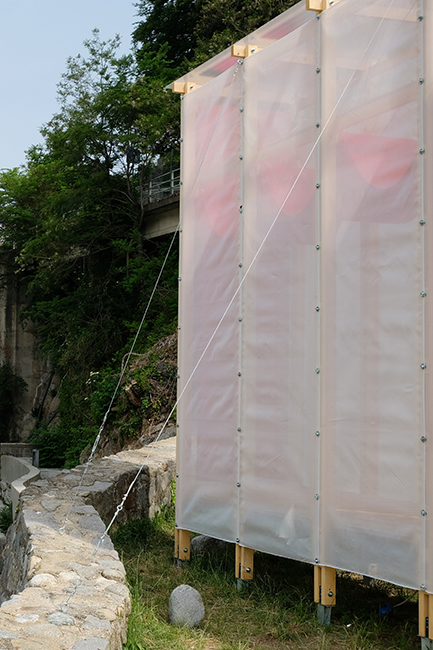
The white construction-site cloth that covers the Landgate project’s wooden structure
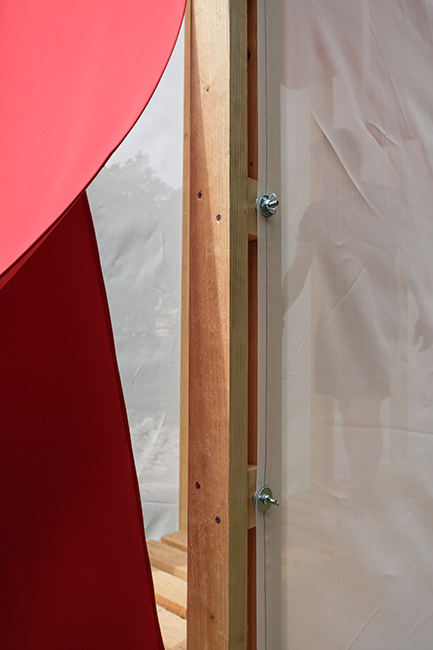
Detail of the construction materials used in the Landgate project: the white construction-site cloth, the red Marzotto cloth, the wood
Twenty years ago, the Giardino delle Fabbriche underwent a profound transformation as a result of a devastating flood. The original protective wall and associated structures were destroyed by the water’s erroding action, together with all the vegetation, while the flood brought with it gravelly deposits. The material deposited, the razing of the previous structures and the construction of a wall along the bank led to the area being used as a construction yard. The site became a temporary storage for the building materials intended for the redevelopment of the area demolished by the flood.
This was the reason for the design choice to use two fabrics. The white fabric is construction-site cloth, which gives the “lantern” its transparency and luminous effect. The inner cloth is more precious, a homage to the city’s history and a reference to the important part the Sella Woolmill has played in it. The brick red 100% wool fabric hangs from the top of the artefact, recalling the sinuous movement of yarn through the production process. In Vicenza, too, woolmills have contributed to the industrial development and growth of both the city and the province. In fact, about half an hour away from our offices, in Valdagno, the Lanificio Marzotto factory operates with a very similar form and structure to that of the Biella Woolmill. The prized red cloth comes from here.
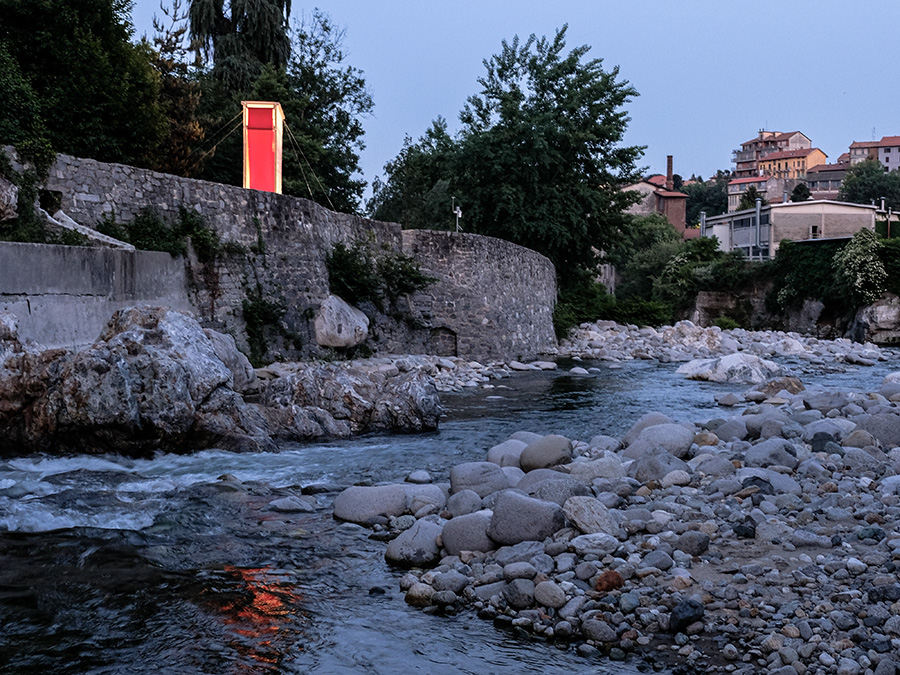
Landgate, the project presented by the Federico Maggia Award 2022 finalist group composed of Giona Carlotto, Giacomo Premoli, Blendi Vishkurti, Edoardo Zamberlan and Gabriele Catanzano
The illuminated device
Trevi 1.0 is a linear profile with a minimal footprint that is easily adjustable. It was designed to be used underwater in pools and fountains; however, its excellent impact resistance and hight degree of protection against the ingress of dust and liquids mean that it is often used outdoors. It integrates perfectly, here, leaving only its light output visible.
Its versatility is increased by the fact that it is available with either diffuse light or optics. In the case of Landgate, fixtures with diffuse optics were installed in the upper part of the device to fill the space with light, while fixtures with 20°x50° elliptical optics were installed in the lower part to create a grazing effect on the white cloth. The warm light effect is created by using a colour temperature of 3000K, combined with the red colour of the Marzotto cloth.
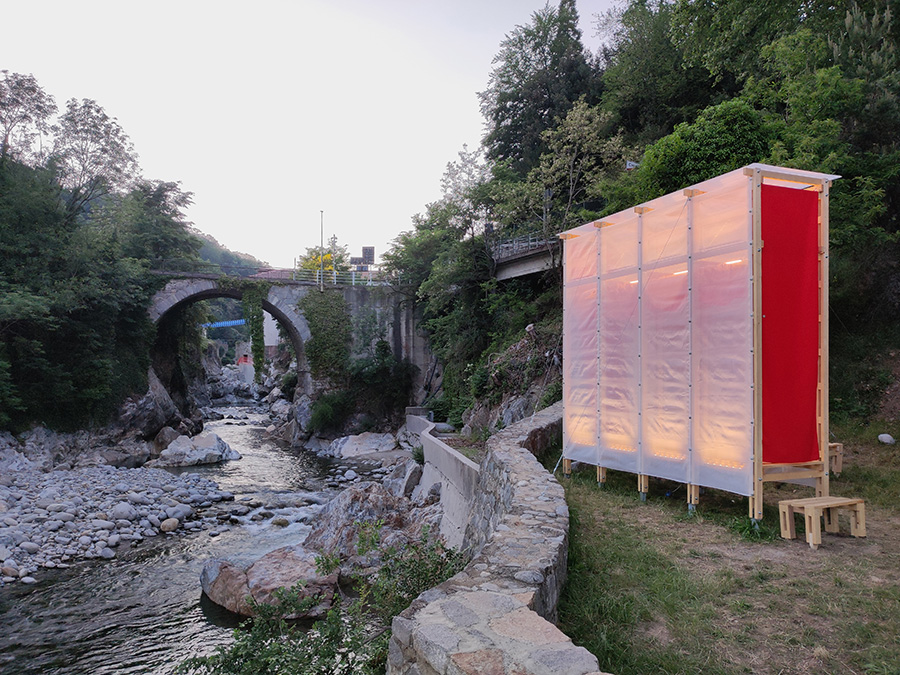
Trevi 1.0, 3000K, 10W - 7W, diffuse - 20°x50°
The diminutive architectural buildings designed by the ten finalist groups and scattered throughout the Biella area can be viewed in the form of project designs and videos at the exhibition set up in a dedicated space inside the Maurizio Sella Woolmill. The exhibition is open until 31 July 2022. At the time of writing, the Landgate installation is still erected in the Giardino delle Fabbriche, giving you the opportunity to try out this landscape-reading device in person.
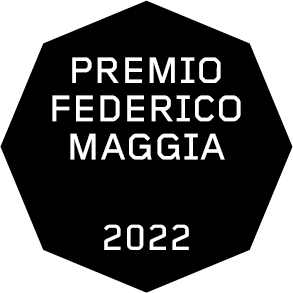
Landgate, the “making-of”
See the video and photos of the making of the Landgate installation at the Maurizio Sella Woollmill, in the Giardino delle Fabbriche in Biella.

